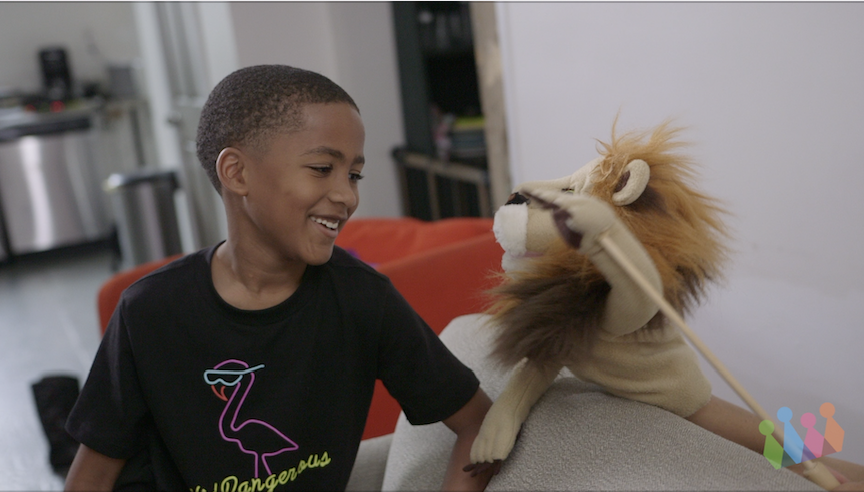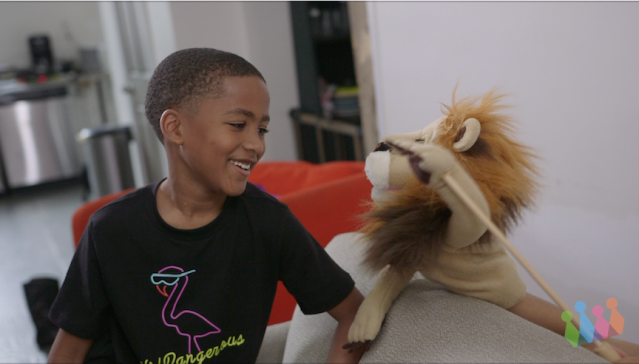
You know those days:
- Your kid sees a new vegetable on their plate and they deliver an Oscar-worthy performance of revulsion!
- The flu shot appointment is in 10 minutes and they refuse to leave the house.
- An inter-sibling squabble has erupted and the house is consumed in chaos.
- It is homework time, and feelings of being overwhelmed and anxiety have capsized your kid…
There are daily (dare I say hourly!) parenting hurdles in which patience runs thin and the words to reassure, cheerlead, positively reinforce ring, well…hollow. These are the moments when emotions get the better of our kids and their legitimate (but explosive) feelings are no match for our better-selves.
Enter…The puppet!
“Puppets can be powerful learning tools for you [the adult] too. Because they can open the door for some important conversations, they can help you gain insight into what children are thinking about and how you might support them,” said Hedda Sharapan, an early childhood development expert at The Fred Rogers Center.
You don’t have to speak in a slew of funny voices or be a Jim Henson or a Fred Rogers to use a puppet as a parent! In other words, don’t get performance anxiety! Rather, think of the puppet as a playful tool in the arsenal of your parenting that will help make life just a little easier.
In fact, in Child’s Play NY classes for our pre-k and kindergarten set, puppets are an invaluable tool in unlocking shy voices and getting the group laughing and playing together.
Why a Puppet is the Best
- Using a puppet can support our kid’s social-emotional development.
- They will be able to talk to the puppet in a way that they might not be able to talk to us.
- When they use puppets, kids can also talk to each other and problem-solve creatively.
- Puppets support communication and emotional literacy since kids can face feelings through play.
How to Use a Puppet to Manage Emotions
Check out this video to see how a simple puppet can be the best parenting hack but in a nutshell, “Puppet Problems” lets kids have the (right amount of) power.
I suggest that the puppet (which is voiced by you!) be scared, misbehaving, or working on the issue that you know your kid is going through. In the video you see us working on a game I call, “Puppet Problems!” This lets your kids be leaders and teachers. For example, when the lion doesn’t want to try vegetables, and your kid has to encourage them, they get to articulate all the good stuff that you’ve been instilling in them! “Lion, these green beans have vitamins!” Ultimately this role-reversal, where they get to be in charge, is so empowering too!
Playing in Character Sheds Light on Good Stuff…and it is Fun!
Role-playing is really healthy. It is also a good opportunity to get to know your child even better and see what they know or what they feel. Maybe they articulate their concerns in a new way, or they express to the puppet something that they might not otherwise voice to you! The exciting thing is that when you the parent voice the puppet, you can communicate with them in a non-threatening way. Essentially, the adult puppeteer disappears.
How to Pick Your Puppets
Get some puppets that are characters you think your child will love to engage with. If they are excited by animals, princesses or astronauts…there’s a puppet for that! That way, they will be even more excited to enter in a dialogue with the puppet – especially if it is the kind of character that they might want to be friends with in real life. I’m constantly amazed by how willingly kids are able to engage with a puppet, ask it questions, give it counsel. But it all starts with a puppet that they are excited to interact with. In the video, we use ones from Melissa and Doug and ones from Folkmania.
Get Creative with your Puppet
Honestly, though, you don’t need to buy a puppet. You can turn your body into a puppet! Check out this video of Silly Chins to see how, with very few supplies, you can make a great (and goofy) puppet with what you have. You can paint faces on your thumb, or the side of your hand too! And if you are looking for an art project extension (hello, rainy day activity!), paper bags and socks also make excellent puppets. Additionally, since your child will have a hand at making this puppet, they might use it even more effectively than a store-bought one for articulating their emotions.
When to Use Puppets
Don’t bust out the puppet for the first time in the middle of a tantrum! It is better to introduce this prop when the issue isn’t even presenting itself. For example, try after dinner or at a chill moment on the weekend. Like preventative medicine, work on the issue not when there is a true emergency. When you use a puppet in this playful way, you start the wheels spinning about bravery and behavior you want to see more of.
Here’s some examples of times when busting out the puppet can help open up communication:
- The birth of a sibling
- A loss in the family
- Trouble falling asleep
- Sibling rivalry
- Having trouble sharing
- General anxiety
- Conflict resolution
- Aggression
- Death of a pet
- Bullying
- Unwillingness to try new food
- Attending a new school or camp











